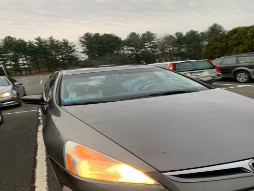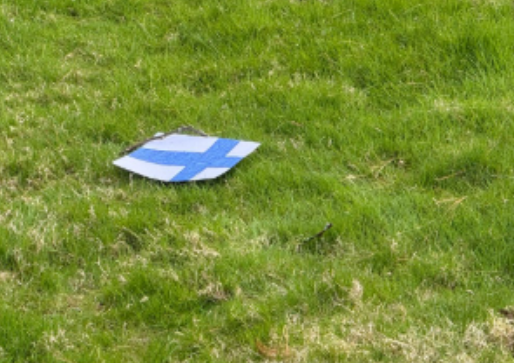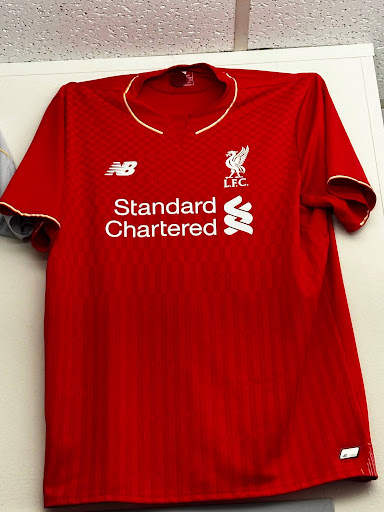Bright Headlights: A Hindrance to Drivers

Seniors Tali Raichelson and Sophia Gianoulis get blinded by intense headlights.
Attention drivers (or attentive passengers)! Have you also noticed an uprise of intensely illuminated car headlights? I know I have.
I am a new driver, and, if you have seen me drive past 6:45 p.m., you have probably seen me do the following: excessively squint, peer over the wheel in an exaggerated manner, or stare intensely at the bottom right side of the road.
This is not because I am a timid driver; this is because headlights are simply too bright! As a new driver driving in a car that is fairly low to the ground, bright headlights are an absolute hindrance to driving at night.
Junior Drew Seidman agrees, saying, “The new LED white bulbs are very bright.”
And Junior Paige Ort confirmed, “I think some cars have headlights that are too bright.”
The increasingly bright headlights are not a mistake nor a careless error made by car companies. Originally, the motor industry’s justification for brighter headlights was to keep the driver safe because brighter headlights equal improved vision of the road.
However, after hearing the consumer’s and ophthalmologist’s viewpoints, companies understood how oncoming traffic was causing vision impairment. According to the blog Greenflag, “Studies have shown it can take up to 10 seconds to recover from the phenomenon.”
Unfortunately, there have been fatalities surrounding this issue. Greenflag stated, “According to police data, accident investigators report ‘dazzling headlamps’ as an influence in 10 fatal crashes, nearly 70 serious accidents and more than 250 other accidents.”
It turns out that many car manufacturers are aware of the blinding issue and are working to combat this problem. For example, Ford released information about their new glare-free high-beams which will be angeled less towards other car’s windshields.
It is important to note that drivers do not have to wait for the updated headlights nor do they need to purchase a new car to avoid the issue. Drivers can purchase glasses with anti-reflective coating that absorbs ultraviolet light. These glasses are highly recommended among ophthalmologists who regularly see patients with night-driving problems.
In addition to investing in anti-reflective glasses, drivers can make sure their windshields are completely clean. Dirty windshields can cause the headlights to be more reflective and thus further impair the driver’s vision.
Anti-glare methods such as these are important says senior Tali Raichelson: “I think headlights can be distracting if someone is driving behind you because of the reflection in your mirror.”
So, as the days become shorter and the need to flick on your headlights and high-beams grows, be aware of the cars you are sharing the road with.





